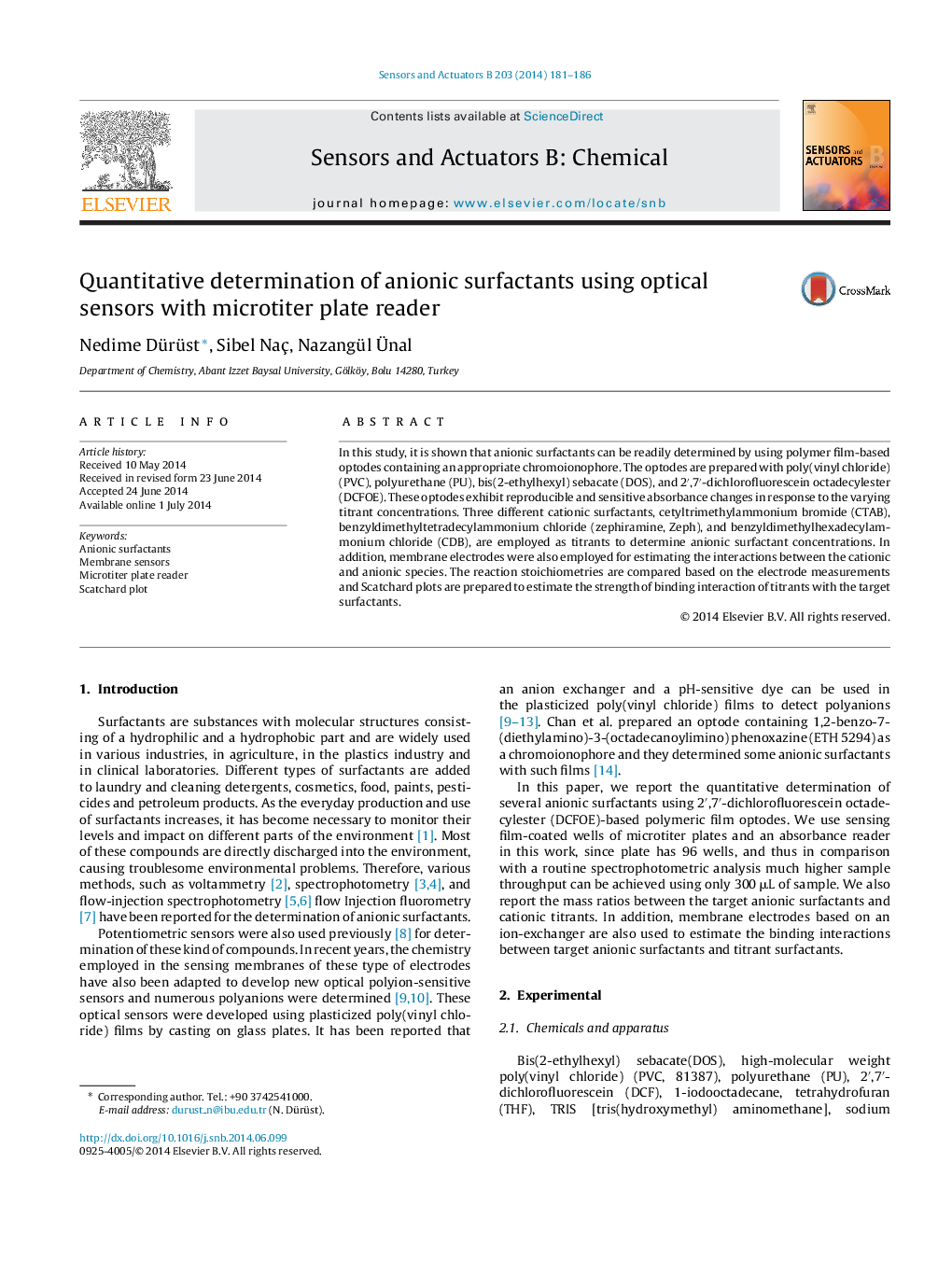| Article ID | Journal | Published Year | Pages | File Type |
|---|---|---|---|---|
| 7146408 | Sensors and Actuators B: Chemical | 2014 | 6 Pages |
Abstract
In this study, it is shown that anionic surfactants can be readily determined by using polymer film-based optodes containing an appropriate chromoionophore. The optodes are prepared with poly(vinyl chloride) (PVC), polyurethane (PU), bis(2-ethylhexyl) sebacate (DOS), and 2â²,7â²-dichlorofluorescein octadecylester (DCFOE). These optodes exhibit reproducible and sensitive absorbance changes in response to the varying titrant concentrations. Three different cationic surfactants, cetyltrimethylammonium bromide (CTAB), benzyldimethyltetradecylammonium chloride (zephiramine, Zeph), and benzyldimethylhexadecylammonium chloride (CDB), are employed as titrants to determine anionic surfactant concentrations. In addition, membrane electrodes were also employed for estimating the interactions between the cationic and anionic species. The reaction stoichiometries are compared based on the electrode measurements and Scatchard plots are prepared to estimate the strength of binding interaction of titrants with the target surfactants.
Related Topics
Physical Sciences and Engineering
Chemistry
Analytical Chemistry
Authors
Nedime Dürüst, Sibel Naç, Nazangül Ãnal,
